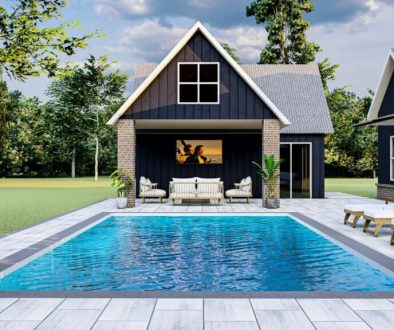The Green Retrofit Movement in Commercial Real Estate
The Green Retrofit Movement in Commercial Real Estate
The green retrofit movement is revolutionizing commercial real estate, focusing on sustainability and energy efficiency to enhance property value and tenant satisfaction.
The Green Retrofit Movement in Commercial Real Estate
The green retrofit movement in commercial real estate is gaining momentum as businesses and investors increasingly recognize the importance of sustainability. This movement encompasses the practice of updating existing buildings to improve energy efficiency, reduce environmental impact, and create healthier work environments. In this blog post, we will explore the significance of the green retrofit movement, its benefits, challenges, and future trends. We will also highlight best practices and case studies that exemplify successful retrofitting projects.
Introduction
As the world grapples with climate change and resource depletion, the need for sustainable practices has never been more critical. The commercial real estate sector, responsible for a significant portion of global energy consumption and carbon emissions, is at the forefront of this transformation. The green retrofit movement aims to address these challenges by upgrading older buildings with modern, eco-friendly technologies and practices. This article will delve into the various aspects of the green retrofit movement, including its financial benefits, environmental impact, and practical applications within the commercial real estate sector.
Understanding the Green Retrofit Movement
- The green retrofit movement involves the renovation and upgrade of existing buildings to enhance their energy efficiency and sustainability.
- According to the U.S. Environmental Protection Agency (EPA), buildings account for approximately 40% of total energy consumption in the country. By retrofitting these structures, we can significantly reduce energy usage and emissions.
- A recent study by McKinsey & Company found that retrofitting existing buildings can lead to energy savings of 30-50%, demonstrating the potential impact on both the environment and operational costs.
For example, the Empire State Building underwent a major retrofit in 2009 that included energy-efficient windows, improved insulation, and a new heating and cooling system. This project has resulted in annual energy savings of over $4 million, showcasing the financial viability of green retrofitting.
The Financial Benefits of Green Retrofits
- One of the most compelling reasons for embracing the green retrofit movement is the potential for financial benefits.
- Upgrading buildings can lead to significant reductions in operating costs through decreased energy consumption. According to the Institute for Building Efficiency, energy-efficient buildings can save property owners an average of 20-30% on energy bills.
- In addition to direct cost savings, green retrofits can enhance property value. A study by the University of Cambridge found that energy-efficient buildings command higher rental rates and can be sold for premium prices.
Furthermore, many retrofitting projects qualify for government incentives, such as tax credits and grants. These financial incentives can offset the initial investment costs, making green retrofits even more appealing to property owners.
Environmental Impact and Sustainability
- The green retrofit movement plays a crucial role in reducing the environmental footprint of commercial real estate.
- By implementing energy-efficient technologies, buildings can significantly lower their greenhouse gas emissions. The Global Carbon Project reported that buildings are responsible for nearly 30% of global CO2 emissions.
- Retrofitting buildings also contributes to resource conservation. For instance, using sustainable materials and practices during the retrofit process can minimize waste and reduce the demand for new resources.
Notable examples of environmentally friendly retrofits include the Bullitt Center in Seattle, often dubbed the ‘greenest commercial building in the world.’ This building features solar panels, rainwater harvesting, and composting toilets, demonstrating how retrofitting can align with a commitment to sustainability.
Challenges in the Green Retrofit Movement
- Despite the numerous benefits, the green retrofit movement faces several challenges that can hinder its progress.
- One significant obstacle is the upfront capital required for retrofitting projects. Many property owners may be hesitant to invest in upgrades without immediate returns, despite the long-term savings.
- Additionally, the complexity of retrofitting existing buildings can present technical challenges. Older structures may require specialized solutions that can drive up costs and extend project timelines.
To address these challenges, collaboration between stakeholders is essential. Property owners, tenants, architects, and contractors must work together to find innovative solutions that balance sustainability goals with budgetary constraints.
Best Practices for Successful Retrofits
- Implementing best practices can enhance the effectiveness of green retrofits and ensure successful outcomes.
- Start with a thorough energy audit to assess current performance and identify areas for improvement. This data-driven approach allows for targeted interventions that maximize energy savings.
- Engage with experienced professionals who specialize in green retrofitting to navigate the complexities of the process. Their expertise can streamline decision-making and help avoid common pitfalls.
Additionally, consider utilizing local and sustainable materials during renovations. Sourcing materials from local suppliers not only supports the community but also minimizes transportation emissions.
Case Studies: Notable Green Retrofit Projects
- Examining successful retrofitting projects can provide valuable insights and inspiration for future endeavors.
- The renovation of the Toronto-Dominion Centre in Canada is a prime example. After a comprehensive retrofit, the building achieved a 40% reduction in energy consumption, resulting in significant cost savings and enhanced tenant satisfaction.
- Another noteworthy case is the Willis Tower in Chicago, where a $350 million renovation included energy-efficient upgrades and a new green roof. This project not only reduced energy usage but also improved the building’s overall aesthetic and tenant appeal.
These case studies emphasize that successful green retrofits can yield substantial financial and environmental benefits.
The Future of the Green Retrofit Movement
- As awareness of climate change increases, the green retrofit movement is poised for continued growth.
- Innovations in technology, such as smart building systems and advanced materials, will further enhance the effectiveness of retrofitting efforts.
- Additionally, stricter building codes and regulations regarding energy efficiency will likely drive property owners to adopt retrofitting practices to remain compliant.
Investors and stakeholders should stay ahead of these trends to capitalize on emerging opportunities within the green retrofit landscape.
Conclusion
- The green retrofit movement in commercial real estate represents a vital shift towards sustainability and energy efficiency.
- By embracing retrofitting practices, property owners can reduce operational costs, enhance building value, and contribute to a healthier planet.
- As technology advances and sustainable practices become more prevalent, the future of the green retrofit movement looks promising. Investing in green retrofitting is not only a responsible choice but also a smart business strategy that can yield long-lasting benefits.
If you’re interested in exploring how you can participate in the green retrofit movement or seeking guidance on commercial real estate transactions, contact us today at Tower Business Brokers, Inc. Together, we can make a positive impact on the environment while enhancing your business investments.



